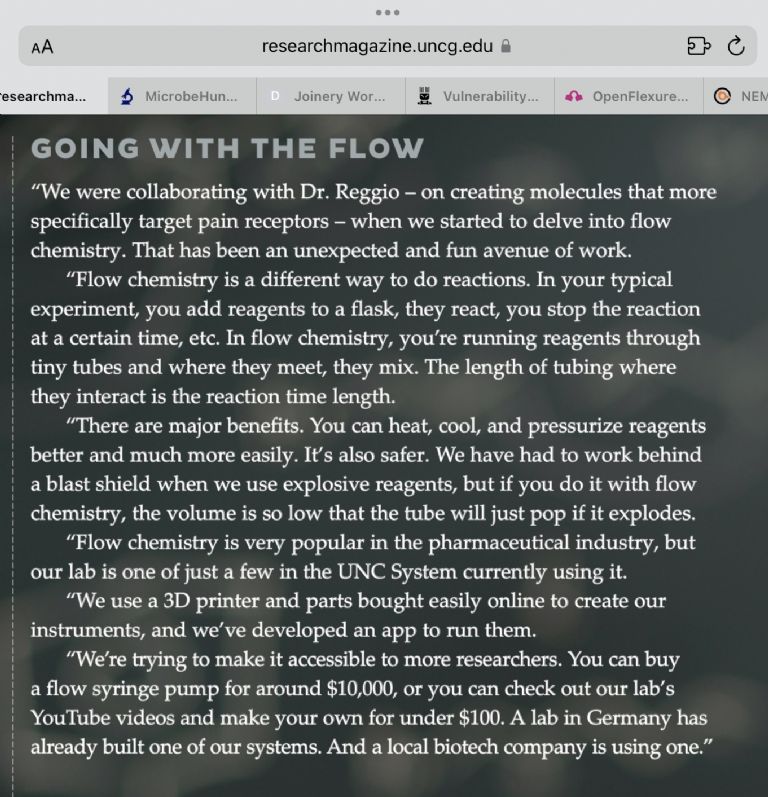The term "syringe pump" being new to me, I was intrigued, and followed the link Michael Gilligan offers.
It would seem the discussion so far raises its own question: is it about the machine's purpose or its manufacture?
The Italian paper's main theme, once I managed to overlook pure jargon like "schematization", appears to focus on the design. Whilst the team – or their lab technicians perhaps – built theirs, they were primarily concerned with what is necessary for making what is in effect a double-acting reciprocating pump deliver a steady flow at very finely controlled rates.
So the engineering details they give were probably to help other researchers in the same field, replicate their experiments.
It would not actually be necessary, for example, to 3D-print the parts. They could, and did, making them rather elaborate in shape because they can while they were at it; but that does not exclude others without such facilities, repeating their study, using other materials and techniques. It's essentially two syringes on a common axis, operated as I understand by a screw driven in alternating directions by a stepper-motor; an arrangement permitting fine metering. (That being the vital point. A harmonic drive such as from an eccentric would make the flow-smoothing much harder or impossible to achieve; and would be of fixed stroke. )
Mechanically, a syringe-pump like that is very simple. The syringe manufacturers have made the critical parts for you! The really clever part for you is the electronics and programming, and designing the flow-smoothing.
It is what the machine does and how, rather than how it is made, that counts.
.
Incidentally, smoothing the output from a pulsing pump is not of course a new idea. The Hydraulic Ram, used for raising water from the same river that is driving it, has an air-cylinder on its output for the same reason.
 Michael Gilligan.
Michael Gilligan.




